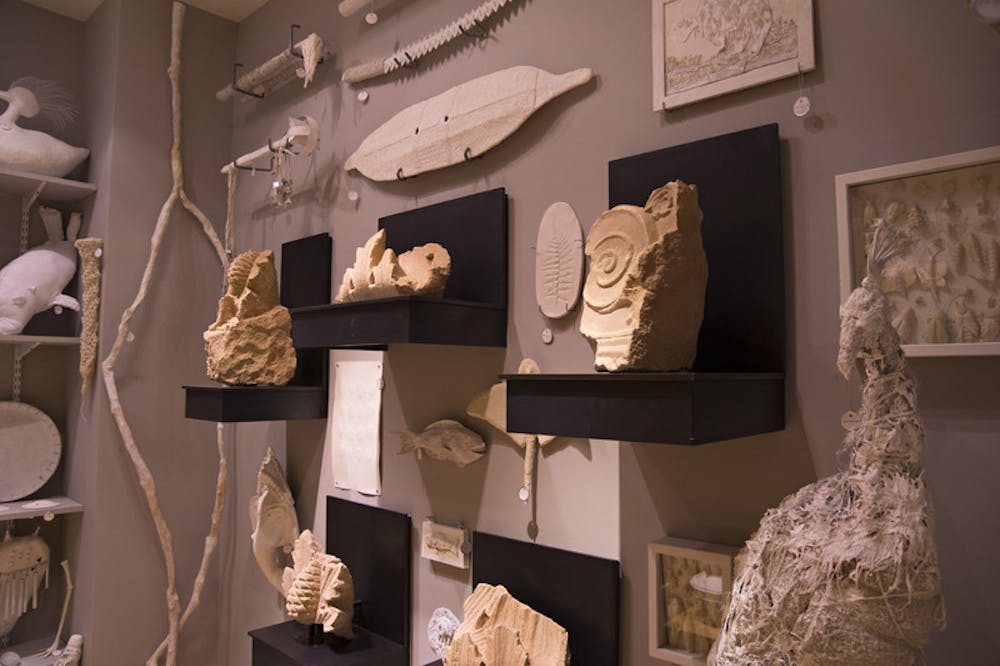The typical museum seeks to preserve a part of the past so that future generations may learn from its artifacts. The Lost Museum, a recently opened installation in Rhode Island Hall, takes a slightly different approach, preserving a museum itself so that visitors can draw conclusions from the objects collected over a century ago.
The museum in question is the Jenks Museum of Natural History and Anthropology, which was opened in 1871 under the guidance of John Whipple Potter Jenks, a member of the class of 1838 and professor of zoology, but closed in 1915. Most items in its extensive collection of preserved animals and anthropological curiosities were simply thrown out years later or scattered among various institutions.
Now, part of the old museum’s collection has been resurrected in Rhode Island Hall in the form of the Lost Museum, thanks to the work of the Jenks Society, a group of academics founded for this mission.
The exhibit is divided into three parts: one which displays surviving relics from the museum’s collection, the second which serves as a replica of Jenks’ office and a third packed with artistic recreations of some of the museum’s many lost objects.
According to Professor of American Studies Steve Lubar, who spearheaded the project, part of the goal was “bringing the history back to life,” but not necessarily the history of the individual objects. The museum helps to show visitors “what museums save and how that changes over time,” he said.
Rebecca Soules GS, one of many who helped put together the museum, said her favorite artifacts were the execution knives. If one visits the museum to see these gruesome tools for themselves, they’ll likely also notice the carved Mapuche wooden stirrups, albatross skull and mysterious “unidentified reptile skin” next to the “eggs of sharks.”
Soules emphasized that the artifacts are “exhibited not preserved,” allowing visitors to see the natural decay of the objects since the museum’s closure.
The artifacts on display are but a small fraction of the original collection, and in some cases only the labels — written by Jenks himself — are all that remain. Lubar said these are his favorite artifacts.
“We don’t know what those things really were, we just have the names,” Lubar said. “It makes us think of why some objects survive and some don’t.”
Jenks’ recreated office, designed with the most meticulous details in mind and emanating an air of welcoming dishevalry, appears as though the slightly eccentric professor has just stepped out for lunch and will be returning shortly to finish preparing his latest taxidermic specimen.
The artistic renderings of lost objects, organized by artist Mark Dion and featuring offerings from more than 80 artists, hauntingly recreate the ghosts of the Jenks collection. All three components create a fascinating portal into the past.
“I was surprised by how much I like it as a whole,” said Jessica Palinksi GS, who also worked on the project. “It comes together in a cohesive way despite being three distinct parts.”
As for what people should take away from the exhibit, “we really intended the installation to provoke thought and contemplation, and reward curiosity,” Palinski said.
The Jenks Society will be organizing guided tours and programs as part of Brown’s 250th anniversary celebration through May.

ADVERTISEMENT




